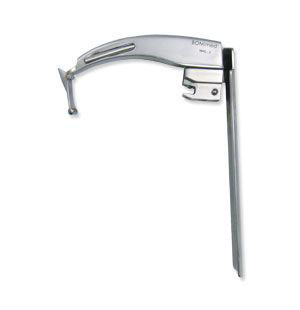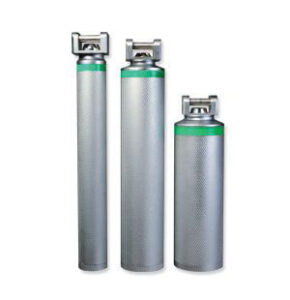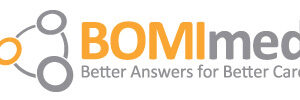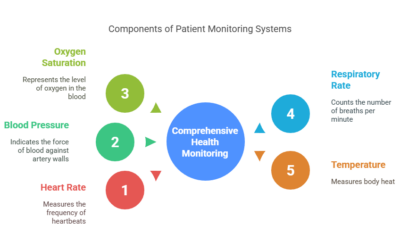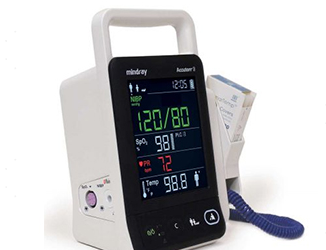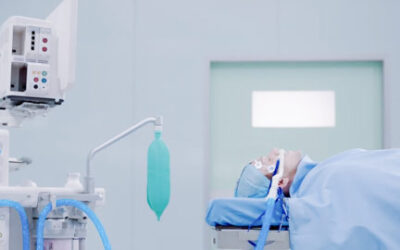Intubation, a critical procedure in medical practice, involves placing a tube into the trachea to maintain an open airway or administer certain drugs. Advances in medical technology have introduced fiber optic intubation devices, which offer significant advantages. Reusable fiber optic intubation devices, in particular, stand out for their benefits in terms of cost-effectiveness, performance, environmental impact, and patient safety.
Cost-Effectiveness
Initial Investment and Long-Term Savings: Although the initial cost of reusable fiber optic intubation devices may be higher compared to disposable alternatives, the long-term savings are substantial. Reusable devices can be sterilized and used multiple times, significantly reducing the per-use cost. For hospitals and medical centers with high patient turnover, the cumulative savings over time can be considerable.
Resource Allocation: The cost savings from using reusable devices can be redirected to other critical areas within the healthcare facility, enhancing overall patient care through better resource allocation.
Performance and Reliability
Enhanced Visualization: Reusable fiber optic intubation devices generally feature high-quality optics, providing clearer and more detailed images, which are crucial for successful intubation, especially in difficult airway scenarios.
Durability: These devices are constructed with robust materials that can withstand frequent sterilization and use without compromising functionality, ensuring reliability in high-stakes situations where device failure is not an option.
Consistency: Regular use of the same device allows medical professionals to develop a high level of familiarity and skill, potentially reducing the risk of complications during intubation.
Infection Control and Sterilization Practices
Infection control is a critical aspect of healthcare, and the sterilization practices associated with reusable fiber optic intubation devices play a vital role in maintaining high standards of hygiene and patient safety.
Comprehensive Sterilization Methods: Reusable fiber optic intubation devices undergo rigorous sterilization processes to ensure they are free from pathogens. These methods include autoclaving, chemical sterilization, and advanced cleaning techniques that remove all biological contaminants.
Standardized Protocols: Healthcare facilities follow strict protocols for sterilizing reusable devices, which helps prevent cross-contamination and hospital-acquired infections. These protocols are based on guidelines from organizations such as the Centers for Disease Control and Prevention (CDC) and the World Health Organization (WHO).
Cost Implications: While the sterilization process adds to the operational costs, the overall expense is still lower than continually purchasing disposable devices. The investment in sterilization equipment and training for staff is offset by the long-term savings and improved patient outcomes.
Evolving Technologies: Advances in sterilization technology, such as low-temperature hydrogen peroxide gas plasma and ultraviolet (UV) light sterilization, offer efficient and effective methods for disinfecting reusable devices without damaging their delicate components.
Customization and Versatility
Reusable fiber optic intubation devices offer a level of customization and versatility that disposable devices cannot match, enhancing their usability across various medical scenarios.
Adaptable to Patient Needs: These devices can be tailored to meet the specific needs of different patients, from infants to adults. Customizable features such as adjustable lengths and diameters ensure optimal performance and comfort during intubation.
Multiple Configurations: Reusable fiber optic intubation devices can be configured for use in various clinical settings, including operating rooms, emergency departments, and intensive care units. Their versatility makes them suitable for a wide range of procedures, from routine intubations to complex airway management.
Interchangeable Components: Many reusable devices come with interchangeable components, such as different types of laryngoscope blades or stylets, allowing healthcare providers to adapt the device to the specific requirements of each intubation procedure.
Enhanced User Experience: Customization options also extend to ergonomic design features, making the devices more comfortable and easier to handle for medical professionals. This improves the user experience and reduces fatigue during prolonged procedures.
Environmental Impact
Waste Reduction: Disposable medical devices contribute significantly to medical waste. Reusable devices, by contrast, are used multiple times before being discarded, thus reducing waste.
Resource Conservation: Manufacturing reusable devices requires fewer raw materials over time compared to producing a continuous stream of disposable devices, contributing to a smaller environmental footprint.
Energy Savings: Producing, packaging, and transporting disposable devices repeatedly consumes considerable energy. Reusable devices, with their longer lifespan, result in lower overall energy consumption.
Patient Safety and Outcomes
High-Quality Imaging: Superior visualization aids in precise placement of the endotracheal tube, reducing the risk of airway trauma and associated complications.
Reduced Infection Risk: Properly sterilized reusable devices have a lower risk of contamination compared to disposable devices, which can be compromised during manufacturing, packaging, or transport.
Enhanced Training and Proficiency: Consistent performance of reusable devices provides a stable platform for training medical professionals, leading to better patient outcomes.
Training and Education
Simulation and Practice: High-quality reusable devices can be used repeatedly in simulation training, providing realistic practice opportunities for trainees, which is invaluable for developing intubation skills.
Feedback and Improvement: Consistent use of the same device allows for better feedback and improvement of techniques, helping trainees refine their skills.
Cost-Efficient Training: Investing in reusable devices for training purposes is more cost-effective in the long run, as these devices can be used by multiple cohorts of trainees over several years.
Technological Advancements
Integration with Modern Systems: Many reusable devices can be integrated with advanced imaging and monitoring systems, providing real-time feedback and enhanced visualization during procedures.
Improved Ergonomics: Ongoing design improvements focus on making these devices more user-friendly, reducing operator fatigue and increasing precision during intubation.
Customization and Upgrades: Reusable devices can be customized and upgraded over time to meet the evolving needs of medical practitioners and advancements in technology.
Economic and Operational Efficiency
Inventory Management: Managing inventory for reusable devices is simpler and more cost-effective than continually stocking disposable devices, reducing the logistical burden on healthcare facilities.
Reduced Supply Chain Dependence: By relying on reusable devices, healthcare facilities can reduce their dependence on supply chains, which can be vulnerable to disruptions, ensuring a more stable and predictable availability of critical equipment.
Operational Efficiency: The robustness and reliability of reusable devices mean fewer interruptions during procedures due to equipment failure, leading to smoother operations and better utilization of operating room time.
Ethical and Social Considerations
Sustainable Practices: Embracing reusable devices is part of adopting sustainable medical practices, which is increasingly important to both healthcare providers and the communities they serve.
Corporate Responsibility: Healthcare facilities that prioritize sustainable and cost-effective practices demonstrate corporate responsibility, enhancing their reputation and trust within the community.
Global Health Impact: In regions with limited resources, the availability of high-quality reusable devices can improve healthcare delivery and patient outcomes, which is particularly important in global health initiatives and humanitarian efforts.
Regulatory and Compliance Considerations
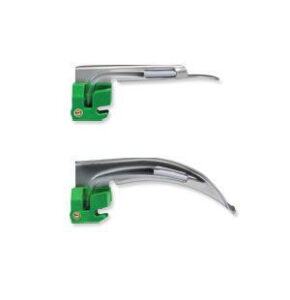 Understanding the regulatory and compliance landscape is crucial for the effective use and maintenance of reusable fiber optic intubation devices in healthcare facilities.
Understanding the regulatory and compliance landscape is crucial for the effective use and maintenance of reusable fiber optic intubation devices in healthcare facilities.
Regulatory Frameworks: In the United States, the Food and Drug Administration (FDA) regulates the use of reusable medical devices, ensuring they meet stringent safety and efficacy standards. Similar regulatory bodies exist worldwide, such as the European Medicines Agency (EMA) and Japan’s Pharmaceuticals and Medical Devices Agency (PMDA).
Compliance with Standards: Healthcare facilities must comply with established standards for the cleaning, disinfection, and sterilization of reusable devices. These standards are outlined by organizations such as the Association for the Advancement of Medical Instrumentation (AAMI) and the International Organization for Standardization (ISO).
Documentation and Record-Keeping: Proper documentation and record-keeping are essential for compliance. This includes tracking the sterilization cycles of each device, maintenance records, and any incidents of device failure or patient complications.
Training and Certification: Ensuring that healthcare personnel are adequately trained and certified in the use of reusable fiber optic intubation devices and their associated sterilization processes is critical. Continuous education and training programs help maintain high standards of care and compliance.
Economic Impact on Healthcare Systems
The economic impact of adopting reusable fiber optic intubation devices extends beyond individual healthcare facilities to the broader healthcare system.
Cost Savings for Healthcare Systems: Large-scale adoption of reusable devices can lead to significant cost savings for healthcare systems, particularly in countries with publicly funded healthcare. Reduced expenditure on disposable devices frees up resources for other critical healthcare needs.
Investment in Infrastructure: The initial investment in reusable devices and the necessary sterilization infrastructure can stimulate economic activity in the medical equipment and services sectors. This includes the manufacturing of devices, development of sterilization technologies, and provision of training and maintenance services.
Long-Term Financial Planning: Healthcare systems can benefit from more predictable and stable long-term financial planning. The reduced need for frequent purchases of disposable devices allows for better budget allocation and financial forecasting.
Global Health Implications: In developing countries and regions with limited healthcare funding, the cost savings associated with reusable devices can make advanced intubation techniques more accessible. This can improve patient outcomes and overall public health.
Research and Development: Economic benefits also extend to the research and development sector. Continuous improvements and innovations in reusable fiber optic intubation devices drive growth and advancement in medical technology, benefiting the healthcare industry as a whole.
Technological Innovations and Future Trends
The field of fiber optic intubation is continuously evolving, with new technological innovations and trends shaping the future of these devices.
Enhanced Optics: Innovations in fiber optic technology are leading to the development of devices with even better visualization capabilities. High-definition (HD) and 4K resolution cameras provide unprecedented clarity, aiding in more precise and safer intubations.
Wireless Connectivity: The integration of wireless technology allows real-time transmission of images to remote monitors, enabling better collaboration among medical teams and remote assistance during complex procedures.
Miniaturization: Advances in miniaturization are making fiber optic intubation devices smaller and more lightweight, improving their ease of use and reducing patient discomfort.
Artificial Intelligence (AI): AI is being incorporated into fiber optic intubation devices to enhance their functionality. AI algorithms can assist in identifying anatomical structures, predicting difficult airways, and providing real-time feedback to the operator.
Sustainable Materials: Research into sustainable and biodegradable materials for reusable medical devices is ongoing. These materials aim to further reduce the environmental impact while maintaining the high standards required for medical equipment.
Reusable fiber optic intubation devices offer numerous benefits, from cost-effectiveness and performance reliability to environmental sustainability and patient safety. As medical technology continues to advance, these devices will play an increasingly important role in ensuring high-quality care and efficient operation within healthcare facilities. By investing in reusable devices, healthcare providers can achieve significant savings, reduce environmental impact, and improve patient outcomes, making it a wise choice for both current and future medical practice.









